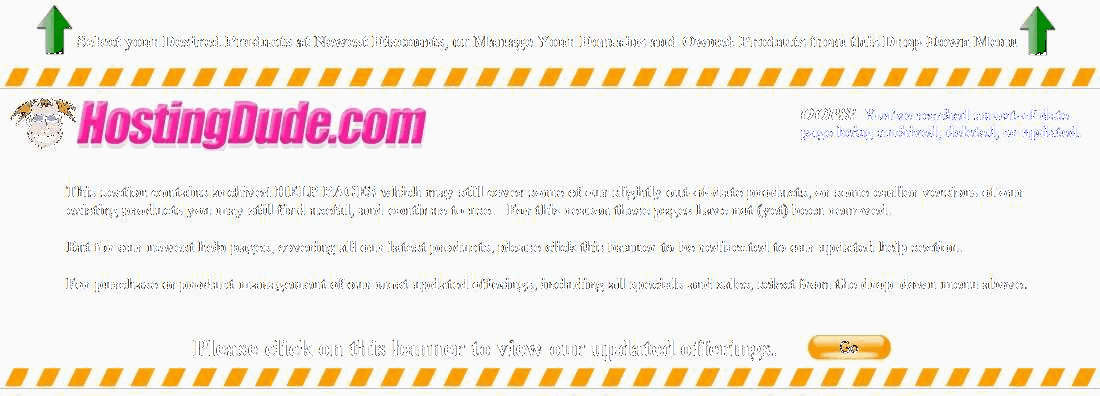Outlook 2013: Setting up Email
So you want to set up your email using Outlook® 2013. No problem! We should have your email working in Outlook 2013 in about five minutes. The following process works for most customers, but sometimes, you might need to make some small changes depending on where you live and which ISP(s) you use.
If you follow the steps below and you are unable to send or receive email, see Outlook 2010 and 2013: Troubleshooting Email for additional help.
BEFORE YOU START: To set up Outlook with your email, you need to know your POP or IMAP Email Server Settings and ports. To find them, go to the HostingDude Account LOGIN and write down the information that displays under Email Server Settings.
Using Outlook 2013 in Windows
To manually set up your email account using Outlook 2013 in Windows, follow these instructions.
To Set up Email Using Outlook 2013 in Windows
- Open Microsoft Outlook 2013.
- If the Microsoft Outlook Startup Wizard displays, in the Wizard, click Next, and then, on the E-mail Accounts page, click Next.
- If the Microsoft Outlook Startup Wizard doesn't display, in the Outlook toolbar, go to the File tab, and then click Add Account.
- On the Add Account page, click Manual setup or additional server types, and then click Next.
- On the Choose Service page, select POP or IMAP, and then click Next.
- In the Your Name field, enter the name that you want to display to recipients when sending email from this account.
- In the E-mail Address field, enter your email address.
- In the Server Information section, for Account Type, select either IMAP or POP3.
- Use the following settings for your incoming and outgoing servers, based on the Account Type selected:
POP3 Incoming mail server pop.secureserver.net Outgoing mail server (SMTP) smtpout.secureserver.net IMAP Incoming mail server imap.secureserver.net Outgoing mail server (SMTP) smtpout.secureserver.net - In the Logon Information section, in the User Name field, enter your email address.
- In the Password field, enter your password.
- Optional: If you want Outlook to remember your password, use the check box to select Remember password.
- At the bottom of page, click More Settings.
- In the Internet E-Mail Settings dialog box, on the Outgoing Server tab, select My outgoing server (SMTP) requires authentication.
- On the Advanced tab, for the Incoming server port, Outlook 2013 should default to the following:
POP3 Incoming server port 110 Outgoing server port 25 or 80 IMAP Incoming server port 143 Outgoing server port 25 or 80 - On the Add New Account page, click Next.
- Outlook will test your account. When finished, click Close to exit the Test Account Settings dialog box.
- On the Congratulations page, click Finish.
That's it. If everything is working properly, you should see email messages in your Outlook Inbox. If you don't, press the F9 key on your computer to receive messages.
Using the Outlook Setup Tool
The Microsoft® Outlook® Setup Tool automatically configures your email account with Outlook. For the tool to work, your email must be hosted through us, you need to have Outlook installed on your computer, and you need to open Outlook at least once.
To Use the Outlook Setup Tool
- Download the Outlook Setup Tool, install it, and then run it.
NOTE: The Outlook Setup Tool is an executable file that you will need to save to your computer, and then launch.
- If applicable, select the email client you want to set up.
- Enter Your Name. This displays in the From field of your email messages.
- Enter the Email Address you want to use with this account.
- Enter your Password.
- If you want to access your email in Web-Based Email, confirm that Leave a copy of messages on the server is selected.
- Click Set Up Account.
- Click OK.
Some Internet service providers might not accept the Outlook Setup Tool's default settings; you might need to manually edit them. For more information, see Troubleshooting Problems Connecting to Email in Outlook Express.
The Outlook Setup Tool supports the following email programs and operating systems :
|
|
If you're not receiving email messages or you can't send messages, see Outlook 2010 and 2013: Troubleshooting Email. Don't worry. There are a few things that can happen during the setup process. We'll help you investigate and fix them.





